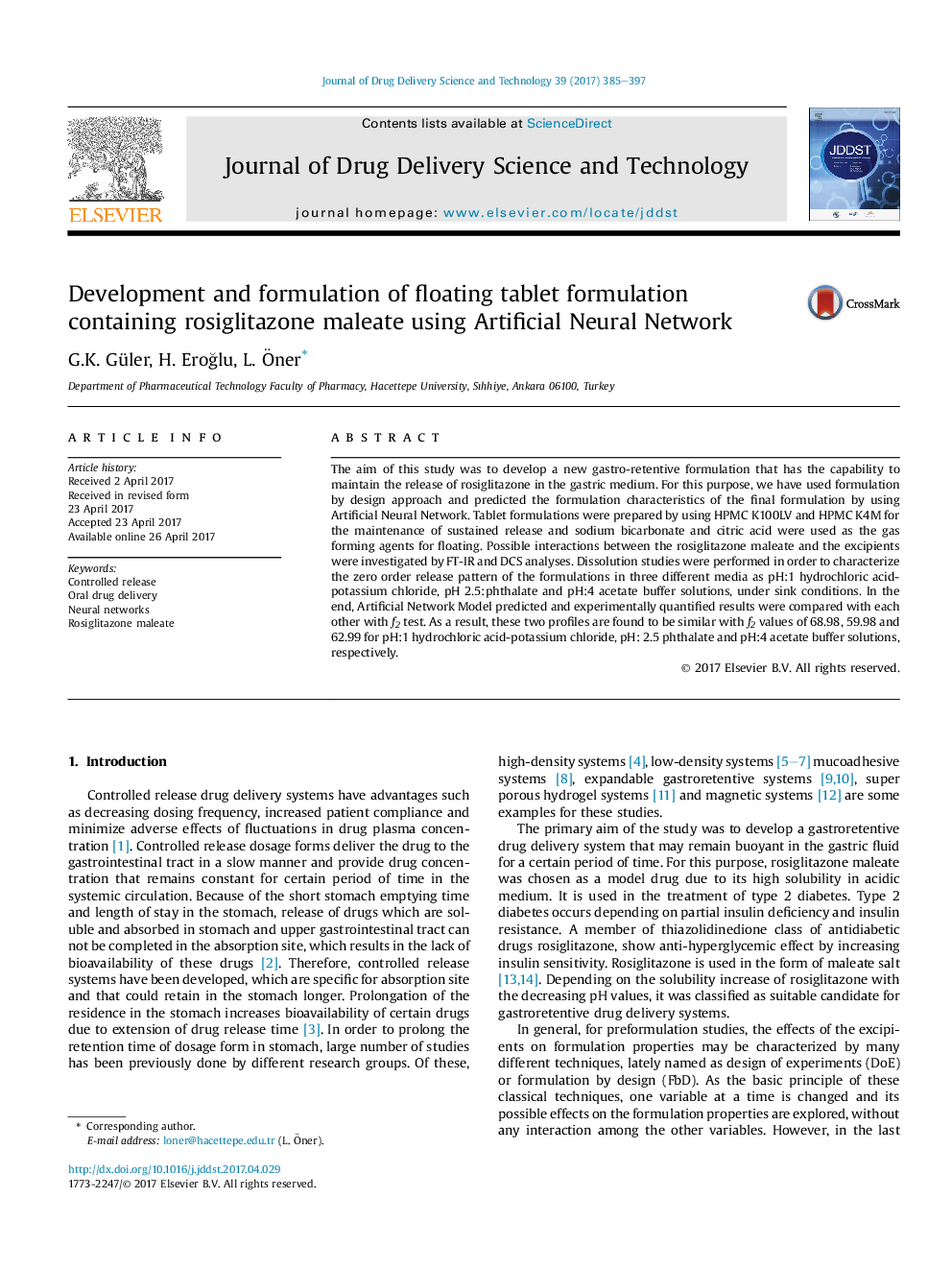| Article ID | Journal | Published Year | Pages | File Type |
|---|---|---|---|---|
| 5548155 | Journal of Drug Delivery Science and Technology | 2017 | 13 Pages |
The aim of this study was to develop a new gastro-retentive formulation that has the capability to maintain the release of rosiglitazone in the gastric medium. For this purpose, we have used formulation by design approach and predicted the formulation characteristics of the final formulation by using Artificial Neural Network. Tablet formulations were prepared by using HPMC K100LV and HPMC K4M for the maintenance of sustained release and sodium bicarbonate and citric acid were used as the gas forming agents for floating. Possible interactions between the rosiglitazone maleate and the excipients were investigated by FT-IR and DCS analyses. Dissolution studies were performed in order to characterize the zero order release pattern of the formulations in three different media as pH:1 hydrochloric acid-potassium chloride, pH 2.5:phthalate and pH:4 acetate buffer solutions, under sink conditions. In the end, Artificial Network Model predicted and experimentally quantified results were compared with each other with f2 test. As a result, these two profiles are found to be similar with f2 values of 68.98, 59.98 and 62.99 for pH:1 hydrochloric acid-potassium chloride, pH: 2.5 phthalate and pH:4 acetate buffer solutions, respectively.
Graphical abstractDownload high-res image (637KB)Download full-size image
